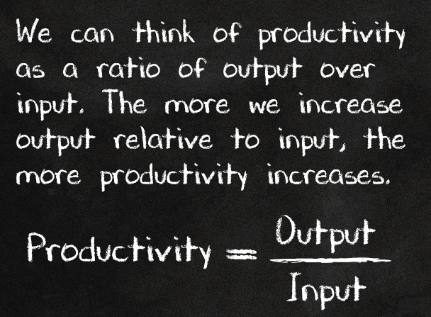9 min reading time
What Is Predictive Maintenance?
7 ก.พ. 2023, 6:03:14

Predictive Maintenance or PDM in short is a type of Preventive Maintenance (PM) strategy where the upcoming due dates of PM tasks are not predetermined. Instead PM tasks are scheduled based on the predictions of upcoming machine failures made by subject matter experts based on machine condition data collected automatically with the help of IoT-sensors. Artificial Intelligence (AI) can also be used to predict upcoming machine failures if there is enough collected data available for analysis.
Preventive PDM strategy is selected for critical operating fixed assets to prevent undesirable events from affecting the operational availability and quality, and the productivity of the company. Machine condition data is analyzed to predict upcoming machine failures and to schedule PM tasks before the predicted time of the upcoming failure will happen. The purpose is to reduce PM costs to minimum by avoiding maintaining machinery and equipment too often and never too late. Predictions give time for the planning of maintenance, repairs and overhauls that require a long maintenance downtime.
Preventive PDM strategy improves productivity by minimizing preventive maintenance costs and by making sure operating fixed assets are running as long as possible before they are shut down for planned maintenance. Productivity is the key for making money. The goal of all for-profit companies is to make money, and use it for asset replacements, improvements, or new investments to grow the company. Otherwise the money must be paid back to the owners or shareholders as dividends.
Photo by Petr Sidorov on Unsplash
THE PURPOSE OF PREDICTIVE MAINTENANCE
The purpose of preventive predictive maintenance is to prevent undesirable major events from happening and to keep the most valuable operating fixed assets in good working order and operational availability and quality at designed level or better. And to avoid maintaining critical machinery and equipment too often and never too late.
WHY IS PREDICTIVE MAINTENANCE IMPORTANT?
Productivity is the amount of products produced and services delivered (output) divided by the amount of raw materials, energy, labor, and other resources (inputs) used to produce those products and deliver those services.
 SOURCE: U.S. BUREAU OF LABOR STATISTICS
SOURCE: U.S. BUREAU OF LABOR STATISTICS
Preventive predictive maintenance plays a key role by keeping the most valuable operating fixed assets in good working order, which enables operations and sales to keep producing and selling more products and delivering better services as long as possible before shutting operations down for maintenance, repairs and overhauls that require a long maintenance downtime. The lack of preventive predictive maintenance will lead to high preventive maintenance costs if preventive maintenance tasks are executed too often or too late causing machine breakdowns and unplanned maintenance downtime that will lead to poor operational availability and quality, reduce productivity, and eventually the company will make less or lose money.
THE GOAL OF PREVENTIVE PREDICTIVE MAINTENANCE
The ultimate goal of preventive predictive maintenance is to:
"Reduce the unplanned maintenance downtime to zero and minimize the cost of preventive maintenance and maximize the productivity of major assets."
Preventive predictive maintenance will let you run your main operating fixed assets as long as possible before preventive maintenance tasks must be executed. The most valuable operating fixed assets are often the most expensive ones to maintain so avoiding the execution of preventive maintenance tasks too often will minimize the cost of preventive maintenance and improve the productivity of the assets.
PREVENTIVE PREDICTIVE MAINTENANCE STRATEGY
Preventive predictive maintenance is one of the four types of preventive maintenance strategies selected by business owners, executive directors, or business management teams for the realization of the preventive maintenance of the operating fixed assets of the company.
PREVENTIVE PREDICTIVE MAINTENANCE PROGRAMS
Preventive predictive maintenance programs are developed by the maintenance management team with the help of subject matter experts based on the maintenance goals and objectives approved by the company management. The most valuable operating fixed assets are selected as the objects of the programs to minimize the preventive maintenance costs and to make sure that the selected machinery and equipment will be able to run as long as possible and will not be allowed to fail in operation. The programs can include sub-programs and projects and they are implemented to execute the selected preventive predictive maintenance strategy.
MACHINE CONDITION DATA
Preventive predictive and condition-based maintenance need machine condition data to determine the timing of execution of the preventive maintenance tasks. Machine condition can be measured with portable devices on a regular basis or continuously with the help of fixed devices installed permanently on selected machinery and equipment. Devices can be wired for transferring condition data from the devices to local gateways or wireless battery-driven devices communicating with local gateways via Bluetooth or Wi-Fi connection, for example. Collected data can be used on the premises or transferred further in to the cloud over the internet.
CONDITION MONITORING SYSTEM
Machine condition data is received by a Condition Monitoring System or CMS in short. The system can be used to view the data and compare it with historical data as well as analyze the data with the help of internal or external subject matter experts if necessary.
PREDICTIONS
Machine condition data is analyzed by subject matter experts provided with extensive knowledge, experience, and skills in machine condition analysis. Data is benchmarked against historical data and algorithms can be developed to help make the predictions of upcoming failures. Subject matter experts are capable of making predictions based on relatively small data sets. Artificial intelligence can be also used to make predictions; however, machine data must be collected for how much longer periods of times to collect large enough samples of data.
CLOUD-BASED MAINTENANCE MANAGEMENT SYSTEMS
Machine condition data can be transferred further into a Computerized or Cloud-based Maintenance Management System like the ANEO Zero CMMS. A CMMS can schedule upcoming recurring preventive maintenance tasks automatically based on the machine condition data and maintenance management can reschedule upcoming preventive maintenance tasks or create nonrecurring corrective maintenance work orders and tasks based on the predictions made by the subject matter experts based on the analyzed machine condition data.
THE OTHER 3 TYPES OF PREVENTIVE MAINTENANCE
There are three other subtypes of preventive maintenance strategies to choose from:
- Predetermined preventive maintenance
- Condition-based preventive maintenance
- Prescriptive preventive maintenance
Predetermined preventive maintenance strategy sets due dates for upcoming preventive maintenance tasks based on regular service intervals based on time or usage. A common case is car maintenance. For example, a new car must be taken to car service every six months or 10,000 km or otherwise manufacturer's warranty will expire. The car manufacturer also determines what services the car service packages include and what spare or ware parts must be used for the car service regardless of the condition of the car or its parts.
Condition-based maintenance includes assessment of physical conditions, analysis and the possible ensuing maintenance actions. Condition-based maintenance tasks can be triggered based on operator observation, inspection, measurement or testing and condition-data collected automatically from data sources.
Prescriptive preventive maintenance also analyses collected machine condition data and develops algorithms to predict the timing of upcoming failures and in addition uses subject matter experts or artificial intelligence to recommend actions to be taken to prevent failures from happening. For example, a prescription for a paper machine could be to reduce machine speed based on vibration data collected from the bearings of the paper reels.
WHAT IS THE RIGHT MAINTENANCE STRATEGY?
Well, it depends ...
When you acquire new property, plant, or equipment their manufacturers predetermine the preventive maintenance actions to be taken in order to keep their warranty valid. So you must follow the predetermined plan until the warranty period ends otherwise the warranty will expire prematurely. A cloud-based maintenance management system can help you follow the manufacturer's plan and avoid missing any upcoming PM tasks.
However, after the warranty period has expired it's up to you to decide whether you want to keep following the original manufacturer's maintenance plan or change to another one.
If the asset in question is not critical to your operations and not too expensive to repair or replace if needed, you might choose a corrective maintenance strategy and let the asset run to failure before you maintain or repair it.
However, if the asset in question is critical to your operations and its failure could stop operations, or it could cause damage to other property, plant, and equipment, people or the environment, or it would be very expensive to repair, you might want to choose a predetermined, condition-based, predictive, or prescriptive strategy instead.
Preventive predetermined maintenance strategy will prevent machinery and equipment from failing or breaking down only if the preventive maintenance tasks are scheduled and executed often enough. This may lead to the loss of production during planned maintenance downtime and higher maintenance costs due to expensive labor costs or spare parts and materials. If the preventive maintenance costs of your critical assets are relatively high, you should consider a preventive condition-based maintenance instead.
Preventive condition-based maintenance requires investments in IoT-devices and condition monitoring systems to measure, collect, store, and analyze machine data. Even if the investment seems expensive it may pay back itself quickly if the selected operating fixed assets are valuable and their preventive maintenance costs are relatively high. The good news is that the price of battery-driven IoT-sensors have gone down and the installation costs of wireless devices is relatively low. And many condition monitoring systems are nowadays delivered to customers via wireless data networks as a software service (cloud service) just like cloud-based maintenance management systems are.
Preventive predictive maintenance requires investments in IoT-devices and condition monitoring systems to measure, collect, store, and analyze machine data just like the preventive condition-based maintenance does. In addition subject matter experts or artificial intelligence must be engaged to analyze the collected machine data and make predictions about the upcoming machine failures. If you your operating fixed assets require a long downtime for maintenance, repairs, and overhauls, you should consider predicting the perfect timing for the maintenance , repairs, and overhauls to minimize the impact on your production, sales, customer service, and the productivity of your company.
Selecting maintenance strategies is not easy. But we can help.
Blog Posts
What Is Prescriptive Maintenance?
Prescriptive Maintenance or RxM in short is a type of Preventive Maintenance (PM) strategy where...
What Is Condition-based Maintenance?
Condition-Based Maintenance or CBM in short is a type of Preventive Maintenance (PM) strategy where...
What Is Preventive Maintenance?
Preventive maintenance is a maintenance strategy selected for critical operating fixed assets to...

